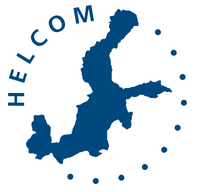Statement by the Executive Secretary of HELCOM, Mrs. Monika Stankiewicz, giving her account on the activities of the Commission in 2013 at HELCOM 35/2014 013 was first and foremost the year of the Copenhagen Ministerial Meeting. Work in the HELCOM Secretariat and with and among the Contracting Parties concentrated very much on preparations for the Ministerial Meeting during the first three quarters of the year. It was important to get all the important deliverables ready by the meeting; therefore we made extra efforts together at all working levels as well as each and every one individually. As an example we had altogether five HOD meetings in 2013 – in normal years there are two, maybe threeThe hard work paid off: we can be proud of the successful Ministerial Meeting. From the Secretariat’s side I would like to thank Denmark for excellent cooperation in the preparations and arrangements of the meeting as part of the Danish chairmanship. But all the Contracting Party representatives, experts, staff, observers and other partners involved in the process deserve our gratitude for their contributions to the success of the meetingIn Copenhagen the Ministers and the High-Level Representatives of the Contracting Parties to the Helsinki Convention negotiated in an open and constructive spirit the open questions and finally adopted a Declaration and some major deliverables, indicating the progress in all fields of the Baltic Sea Action Plan. These included new HELCOM Recommendations in the maritime and maritime special planning fields, amendment to the Helsinki Convention concerning shoreline response, joint HELCOM/OSPAR guidance on harmonized approach to the exemptions under the IMO Ballast Water Management Convention, and revised Monitoring and Assessment Strategy.The Ministerial discussions on the timing for the establishment of the Baltic Sea NOx Emission Control Area under Annex VI of MARPOL proved challenging. While we are awaiting the outcome of the IMO considerations on the same issue, I’m especially glad that the Platform on green technology and alternative fuels for shipping, supported by the Ministers, has already kick-started and the related draft roadmap for future actions is presented to this Meeting.Further, I am especially happy about the adoption of the updated and revised Nutrient Reduction Scheme, including the sharing of the pollution reduction burden between HELCOM countries. By agreeing to this, the Contracting Parties showed their commitment to continue their efforts to fight eutrophication of the Baltic Sea. One last step is still to be made – we are awaiting the outcome of the national negotiations in Poland so also Poland fully signs up to the common schemeThe revised HELCOM nutrient reduction scheme includes also airborne nitrogen and explicitly extends to sources outside the coastal countries, in the Baltic Sea catchment area. This is important to be able to reduce inputs in a more cost-efficient and comprehensive way.With the funds allocated in the HELCOM budget, complemented by some special contributions, and with the dedication of numerous HELCOM experts around the Baltic Sea we were able to finalize major projects, which delivered important inputs for the Ministerial Meeting. The Red List project did a huge job, an unprecedented effort, during five years to verify the conservation status of biodiversity. 1753 species and 209 biotopes were assessed for risk of extinction in the Red List reports. 69 of Baltic Sea species and 59 biotopes were found to be under such risk. The enormous amount of data collected and analyzed during this project – and also outcomes of other projects such as CORESET project on core-indicators – is in the HELCOM website available to the public openly and free of charge.And this brings me to the second big theme of last year: reform, or modernization, or streamlining, which was started in a very concrete way, by reforming the HELCOM website. The new face of HELCOM was revealed just before the Ministerial Meeting. You have seen the outcome, but what you have not seen are the extra efforts by everybody working in the Secretariat during the construction of the new website – all staff worked really hard in the web project on top of their regular responsibilities. The new meeting portal will soon follow. And as we all know, the whole HELCOM working structure is under review since last year. I’m sure that the streamlining process will lead to a more efficient HELCOMAs has been said many times, also during this meeting and the Jubilee Session, for HELCOM it is as important as the ambitious contents of the Ministerial Declaration to transform words into action, to ensure that the governments, HELCOM community and other stakeholders act together and make the change.
Statement by the Executive Secretary of HELCOM, Mrs. Monika Stankiewicz, giving her account on the activities of the Commission in 2013 at HELCOM 35/2014.
